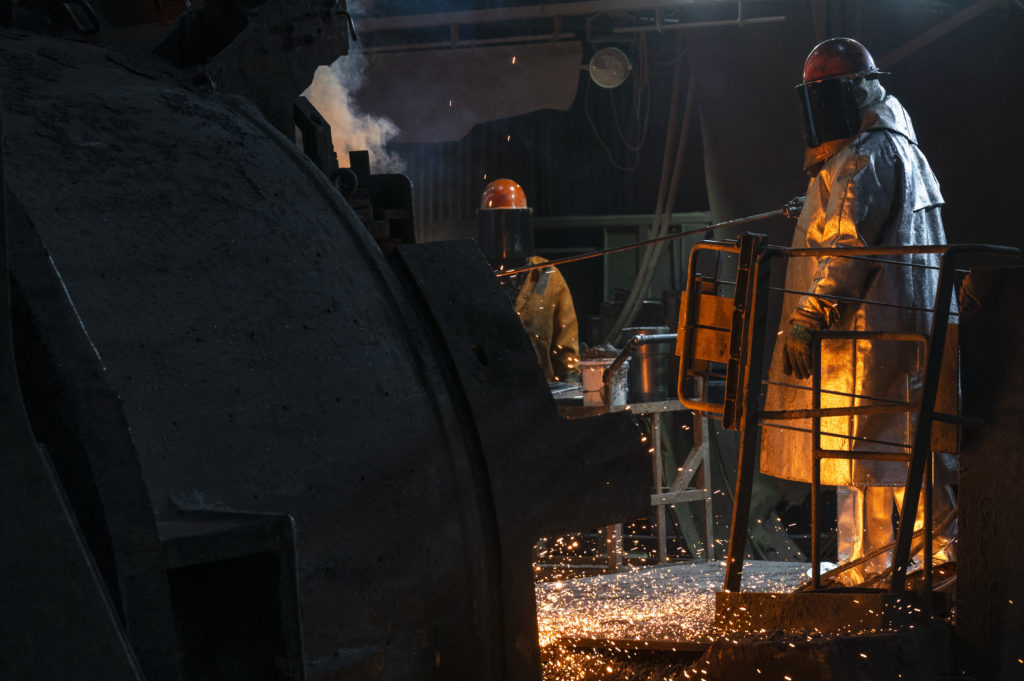
The reason: Steel manufacturers in the United States already produce “some of the cleanest steel in the world,” according to a new report from the Boston Consulting Group.
The need to lower carbon emissions to address climate change presents an opportunity for America’s steel industry, which already produces some of the cleanest steel on the planet, according to a new report from the Boston Consultancy Group (BCG), on behalf of Third Way and Breakthrough Energy.
Global steel production currently accounts for 11% of global carbon emissions, so decreasing its impact on the planet is critical – and that will undoubtably lead to an increased demand for clean steel, or steel made with “low embodied carbon.”
And since “U.S. steelmakers produce [more] lower-carbon steel than competitors in major steel-producing countries and stand to benefit from policies that reward this low-carbon advantage… America’s focus should be on selling as much steel as possible from facilities here in the U.S.,” Third Way argues in a policy memo.
The global market for clean steel is expected to be 20,000 to 25,000 million tones through 2050, equivalent to around $10 to $15 trillion in cumulative steel sales. If the U.S. is able to capture a “$570-810 billion share of that market by focusing on opportunities in North America,” about 30,000 new jobs will be created, according to the BCG report.
American steel manufacturers and workers are well ahead of the rest of the world when it comes to making steel with lower carbon emissions.
U.S. Steel has pledged to become carbon neutral by 2050, and has announced it is making progress to become more sustainable. Similarly, Cleveland-Cliffs – the largest flat-rolled steel producer in North America – has pledged to reduce its greenhouse gas emissions by 25% by 2030 from 2017 levels, and is investing billions to do just that.
Compare that to China’s state-run steel industry, which is driving an overcapacity crisis and contributes mightily to global steel emissions. And unlike the American steel industry – which is making progress in reducing its emissions – China’s steel industry continues to see its emissions rise.
As I noted last week:
China produces over 60% of the global emissions from steel plants. About 15% of the country’s total emissions come from steel and the sector is heavily reliant on coal as a power source. China’s overall greenhouse gas emissions exceed those of the United States and other developed nations combined. China’s government has repeatedly promised to reduce emissions from its steel industry, but without avail. In fact, the government recently pushed back a goal of reaching “peak emissions” in the industry.
In response, the United States and European Union are in the beginning stages of putting together an effort to place climate-based tariffs on steel imports from China. While the specifics are still unknown, the fact that the allies are working together to take on China’s repeated failure to reduce emissions is a good sign.
But much more will need to be done to ensure the United States can compete in the clean steel global marketplace.
Ensuring that taxpayer dollars are reinvested back into American-made clean steel is one step policymakers and the Biden administration must prioritize.
Buy Clean and Buy America policies must work hand-in-hand to support America’s steel manufacturers as they make the significant investments needed to achieve their ambitious carbon goals. Otherwise, they could be undermined by foreign countries that are aiming to dominate global steel production, including through predatory state investments and overcapacity.
Third Way also calls for additional policy recommendations to encourage the growth of America’s clean steel industry, including providing funding for industrial facility improvements, leveraging tax credits to lower facility emissions, and the continued development of clean steel technologies.
